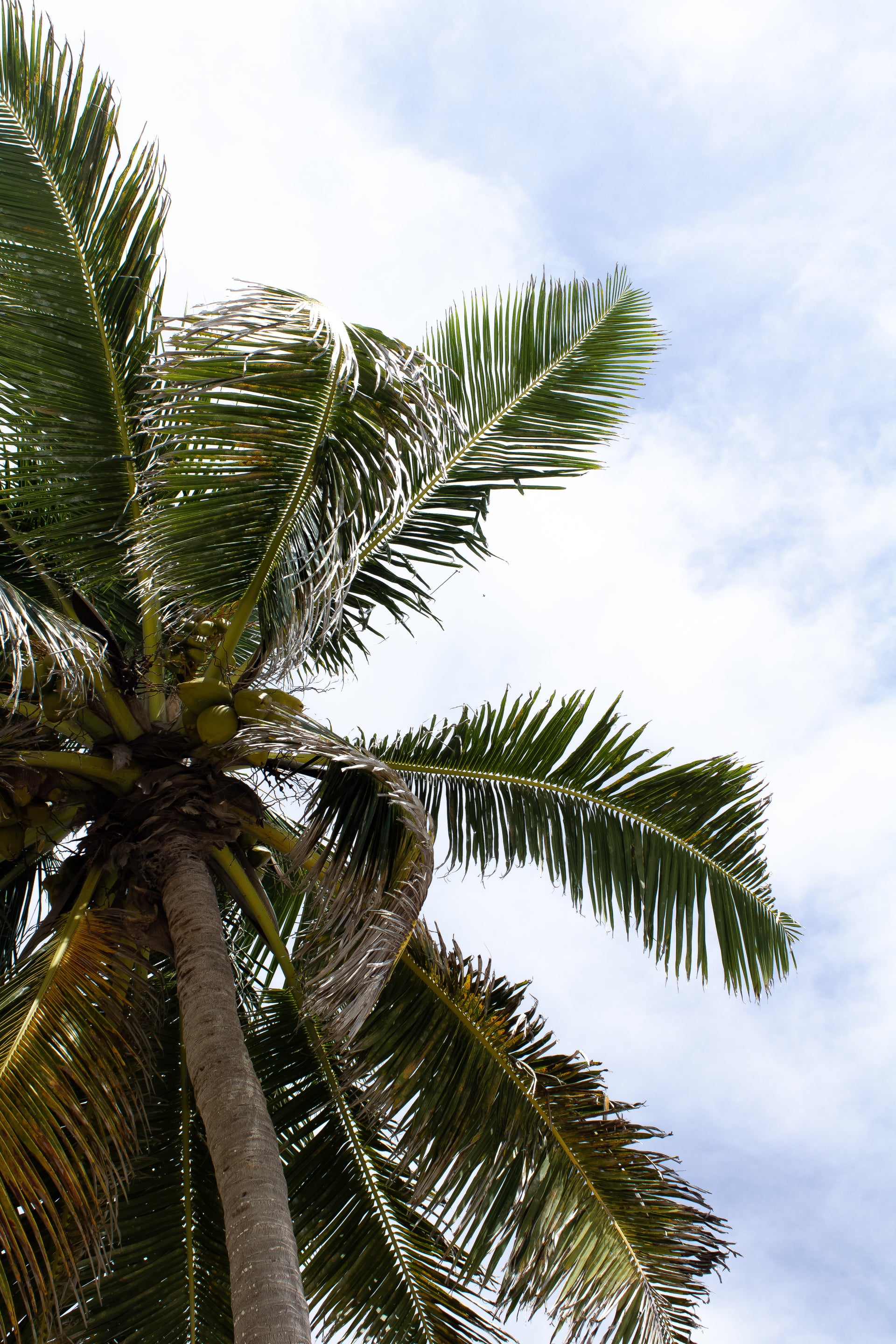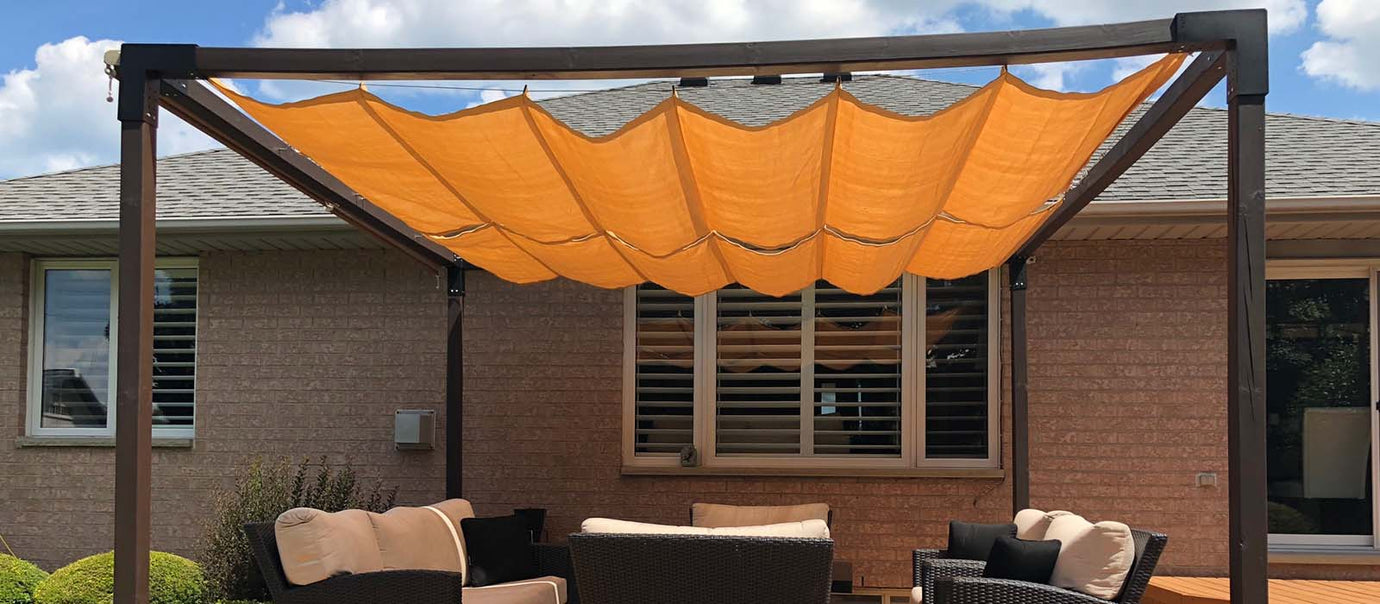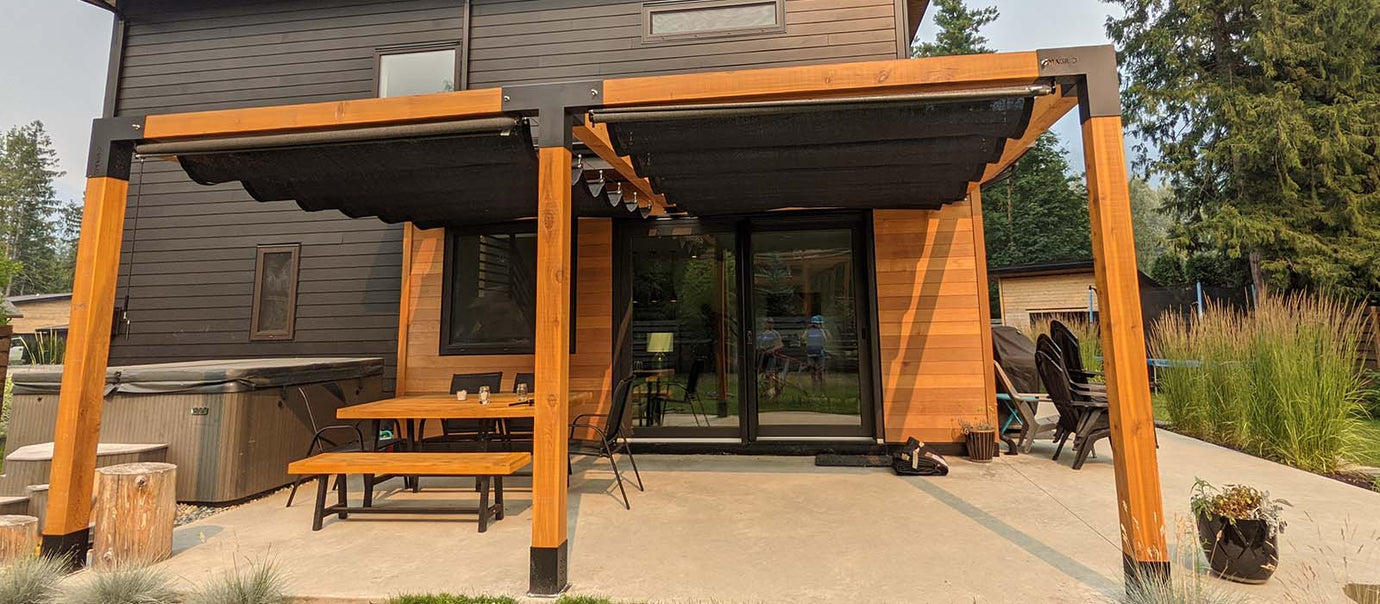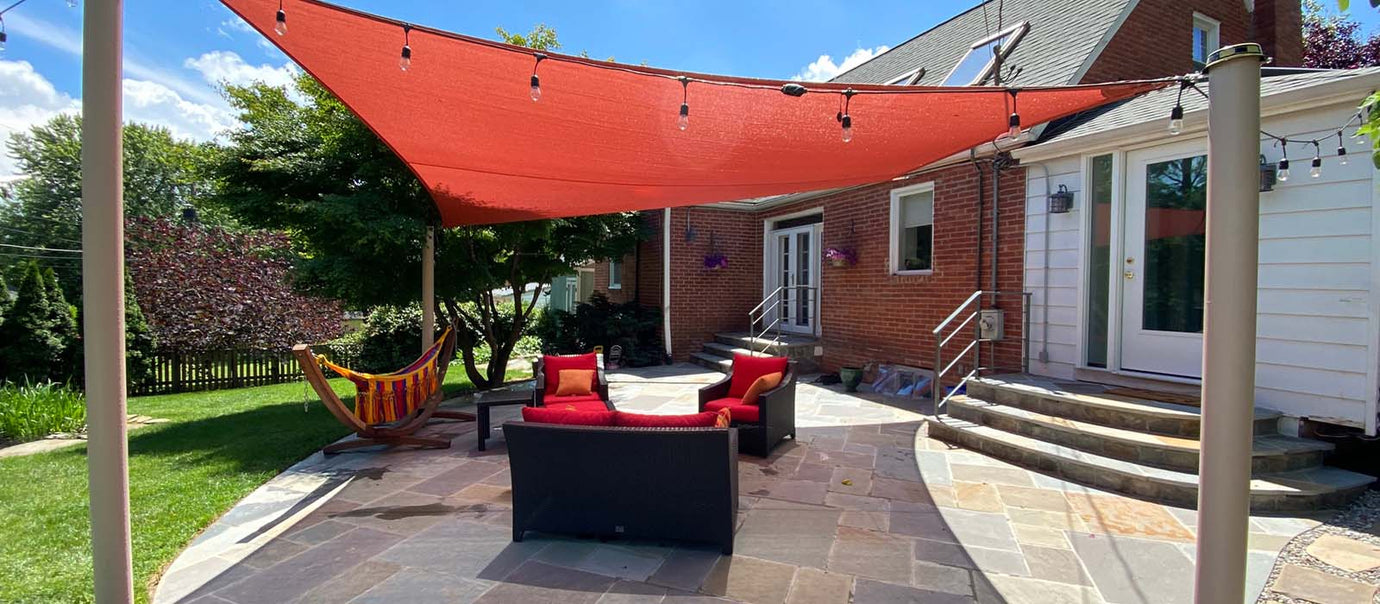Our YouTube channel includes detailed installation guides, frequently asked questions, product overviews and lots more. We are always open to content ideas so please let us know if there is a topic you would like us to cover.
How to Shade a Deck
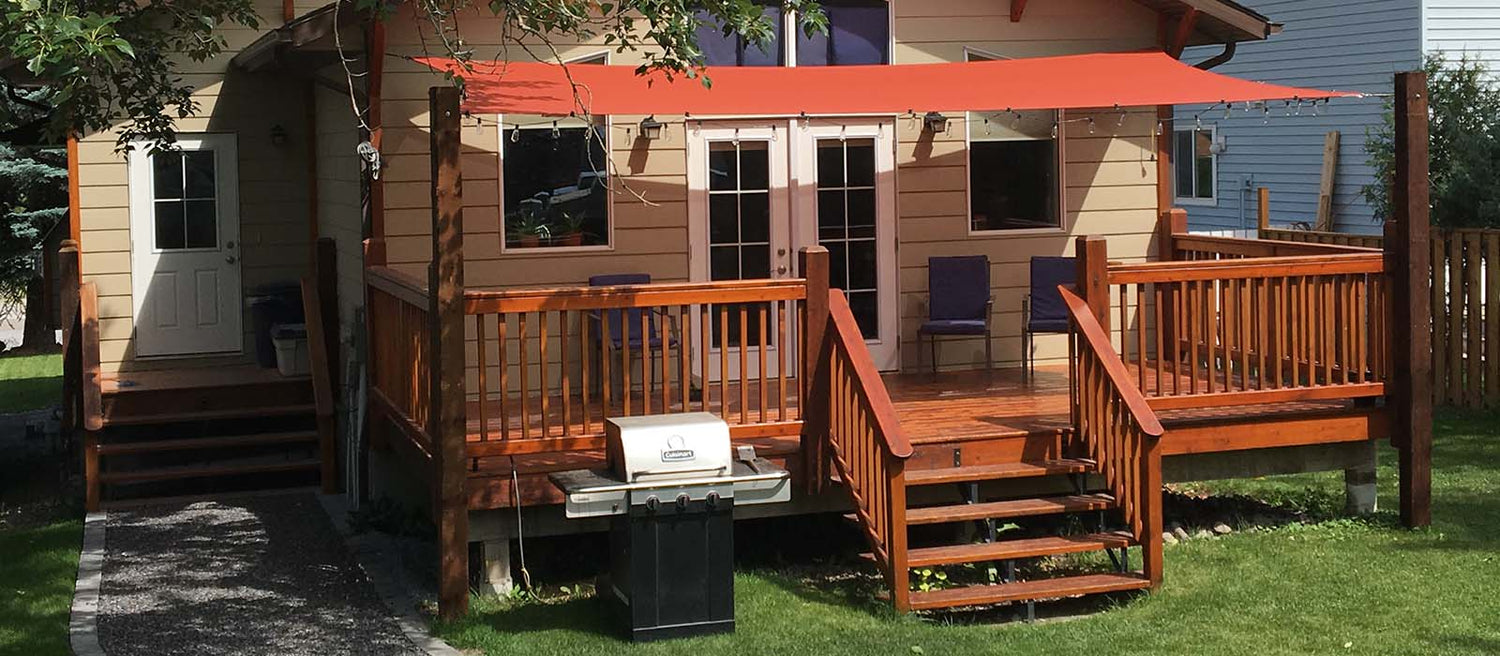
Your deck can be one of the defining features of your outdoor space, it’s often where we place our BBQ, enjoy family dinners and relax. It is also a large investment so ensuring maximum use of this space is crucial. We offer many shade solutions at Shade Sails Canada, not all of which will work with every setup so, we’ve created this tutorial to help guide you through the process and ensure you use the correct product for your space.
When considering shade for your deck, there are several important things to consider including the construction status, the position of the sun, the height of your deck and your posts & anchor points, all of which we will discuss below.


Contents
- Construction Status
- Planning Tips
- Position of the Sun
- Height of Deck
- Posts & Anchor Points
Construction Status
Incomplete
If you’re reading this article as you’re planning out your deck, you have the advantage of being able to taper certain elements of your structure to withstand the force created when tensioning fabric. In particular, pay attention to the posts and anchor points section as these are essential to consider to ensure correctly tensioned shade. Planning out your shade at the same time as your deck is the optimal scenario and leads to a much more cohesive look and feel.
Complete
If your deck is already complete, no problem! This is the most common scenario we encounter and we have many tips to ensure you use the right product and that it is set up properly. The most important thing to consider here is the flexibility and strength of your existing structure. Tensioned fabric creates a lot of force so if your structure isn’t strong enough to support a properly tensioned shade sail you will either need to add in additional posts or consider using a framed structure to dissipate the force, with which you can use either a shade sail or a Roman Shade.

Planning Tips
Custom shade sails offer the most flexibility and performance, however, if you’re on a budget, standard shade sails will work just fine. If you’re purchasing a custom shade sail, you won’t need to make any accommodations for your anchor points; custom shade sails are made to fit your specifications exactly so once you’ve worked out where you would like to anchor to—covered below—you take your measurements, send them to us and we create a shade sail for that exact space.
If you’re purchasing a standard sized shade sail, you will need to order the shade sail first then work out where you can attach it to. Standard-sized shade sails are particularly difficult with decks as the positioning of posts and anchor points can be difficult—we almost always recommend going with a custom.
Position of the Sun
Another important consideration before we discuss posts and anchor points is the position of the sun. We often enjoy relaxing on our deck during the morning and the evening and this can be one of the most annoying times in terms of sun position.
We always try to suggest square and rectangle shade sails over triangles as they look and perform much better. For this particular consideration, they also add an additional level of flexibility to your setup. Consider where you will be sitting on your deck and at what time; In the morning and evening, the sun is at its lowest points and is not always covered by shade, particularly if you’ve used a triangle.
Square and Rectangle shade sails allow you to vary the heights of your attachment points to a much greater degree. This not only creates an appealing hyperbolic shape but also allows you to lower one of the attachment points to take into account the sun's position during these awkward times of the day.
Bry's Tip: Use our Traveller System to add extra flexibility to your shade structure. The Traveller System allows you to adjust the corner of the shade sail to better accommodate a wider range of sun positions.


Height of Deck
One last thing to talk about before we start planning out our anchor points is the height of the deck. Again, tensioning fabric creates force and the longer your posts are, the more propensity they have to bend when put under force. The height of the deck will determine how substantial your posts and footings will need to be.
Ground-level
If your deck is “at grade”, meaning it rests close to the ground, the posts and footings will be the same as a regular shade sail—we’ll cover these specifications below. If this is the case, you can continue planning out your shade sail in a normal fashion.
A common solution for both ground level and above-ground decks is the use of a frame such as a pergola. This reduces the need for footings as the frame itself supports the force from tensioning the shade sail and the legs of the frame/pergola can be bolted to the deck. The image below shows a ground-level deck utilizing a pergola frame (in this case the customer has used a Roman Shade but frames can also be used for shade sails) vs an above-ground/raised deck flying a free-span shade sail.
Another thing to consider when using a frame is the possibility of horizontal shade. Both pergola shade panels and privacy panels with a curtain kit can be used with a pergola frame both on their own or in combination with a shade sail.


Above-Ground/Upper Decks
If your deck is raised, as is often the case, we highly recommend contacting us as you’re planning out your shade. The additional strain put on your posts will require more substantial footings and likely thicker posts. If you have an engineering background, this step will make perfect sense but if not, please contact us, doing so will ensure correct and safe tensioning for the life of your shade structure.
Very rarely do we suggest attaching to existing railings or other parts of an existing deck as these do not normally provide enough strength to support a shade sail. Knee posts are a common solution to combat this; knee posts counterbalance the tension from the shade sail by anchoring the posts to the structural beams on the deck with guy wires. This allows for minimal footings and can also increase the amount of shade as the anchor point is extended outside of the area being shaded.


Posts & Anchor Points
Now we’ve got our initial considerations out of the way, it’s time to think about where you can anchor your shade sail to. If for some reason there are no suitable anchor points, you will want to consider a framed structure like a pergola; these structures brace themselves and can be attached to an existing surface without the need for footings. However, please bear in mind, framed structures by nature have many posts that often get in the way of your space, you’ll be able to achieve a much greater amount of freedom by positioning your anchor points outside of your space and tensioning fabric over this area.
Cabling
It is first worth bearing in mind the ability to run lengths of cable from your attachment point—whether that be an anchor point or a post—to your shade sail. This means, your anchor points and your posts don’t need to be at the exact location your corner terminates. If you think adding lengths of cable to your structure might help and would like further advice, please call us.
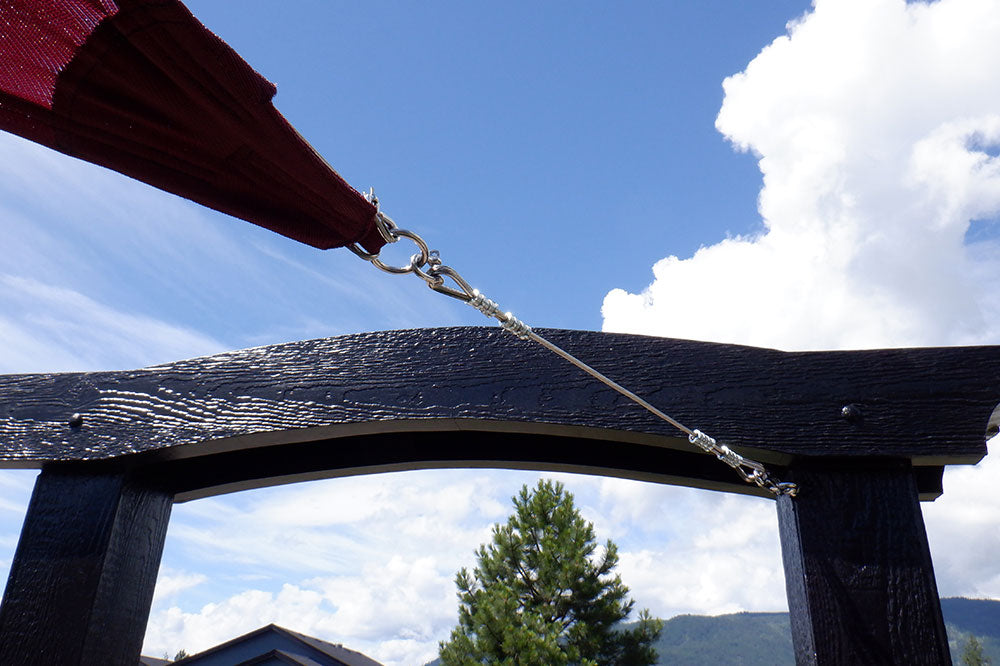

Existing Structures
With posts being the most expensive and laborious type of anchor point, it is well worth seeing if it is possible to attach to an existing structure like your house. We offer a selection of anchor point hardware that can be used in a variety of scenarios and make very quick, efficient and cost-effective solutions. For example, if you’re attaching to the corner of a wall, we suggest using our External Corner Bracket. If you’re attaching to a flat surface, our Diagonal Eye Wall Plate will be your hardware of choice. Please see our Anchor Point Hardware page for a full selection of available hardware and call us if you have any questions.

Posts and Footings
Having established where you can attach to an existing structure, the final part of your planning will be establishing how many posts you will need to make up the remaining attachment points.
Suppose you can attach two of the corners of your 10’ x 10’ square shade sail to your house, you will need to install two posts, roughly opposite those anchor points. Choosing and installing posts is beyond the scope of this tutorial, please see our Ultimate Guide to Shade Sails Posts tutorial. However, there are several points specific to decks that you will need to consider.
If the structural posts for your deck extend or can be planned to extend high enough to provide an anchor point and meet the minimal structural requirements, these can be used as anchor points. If not, you will have to install posts separate from your deck.
These can either be installed on the outside of your deck, which is optimum or, if you can cut through your deck, posts can also be installed on the interior of your structure. For obvious reasons, this is not optimal but can be done if absolutely necessary. As previously mentioned, custom shade sails provide by far the most amount of flexibility and will enable you to position your posts, pretty much, wherever you want.


Frequently Asked Questions: How to Shade a Deck
How to shade a deck from the sun?
Shading a deck from the sun can be achieved through a variety of methods, depending on your needs and style preferences. Popular options include installing a pergola with climbing plants, adding retractable awnings, using outdoor umbrellas, or setting up shade sails.
These solutions offer flexibility and can enhance the aesthetic of your outdoor space while providing relief from direct sunlight.
What is the best shade for a deck?
The best shade option for your deck depends on factors like your budget, climate, and desired look. Pergolas and shade sails are excellent for a stylish and durable solution, while retractable awnings offer versatility.
If you’re looking for a quick and affordable option, consider Shade Sails. Ultimately, the best shade is one that balances functionality, style, and comfort for your specific needs.
